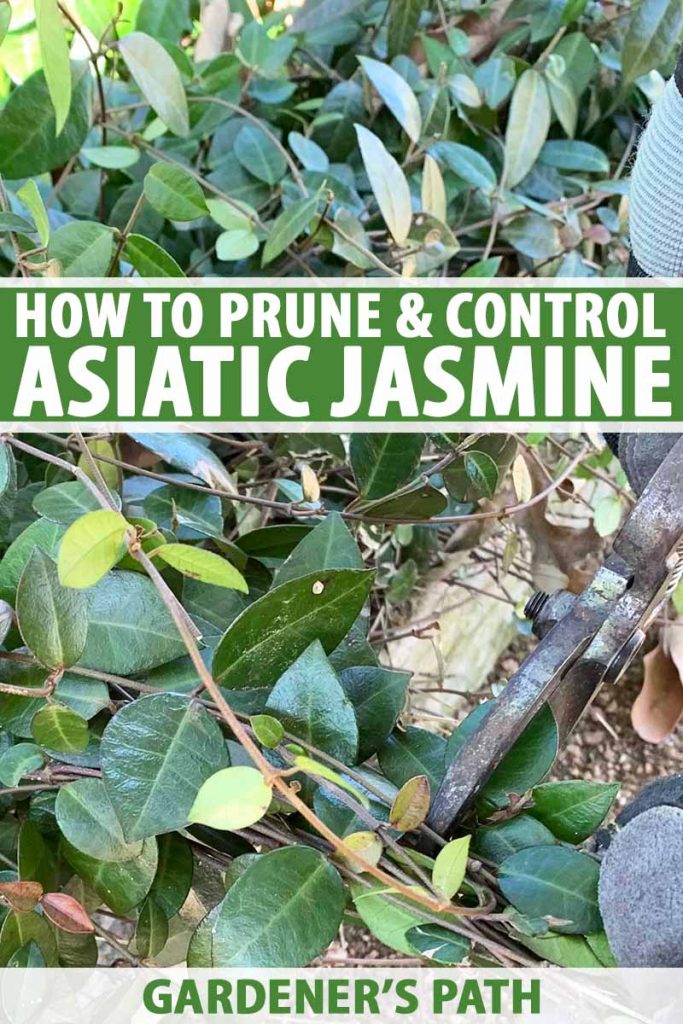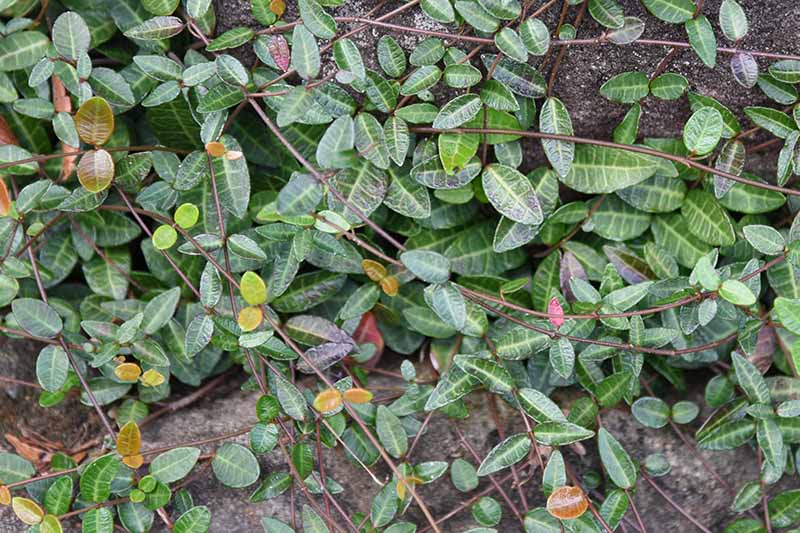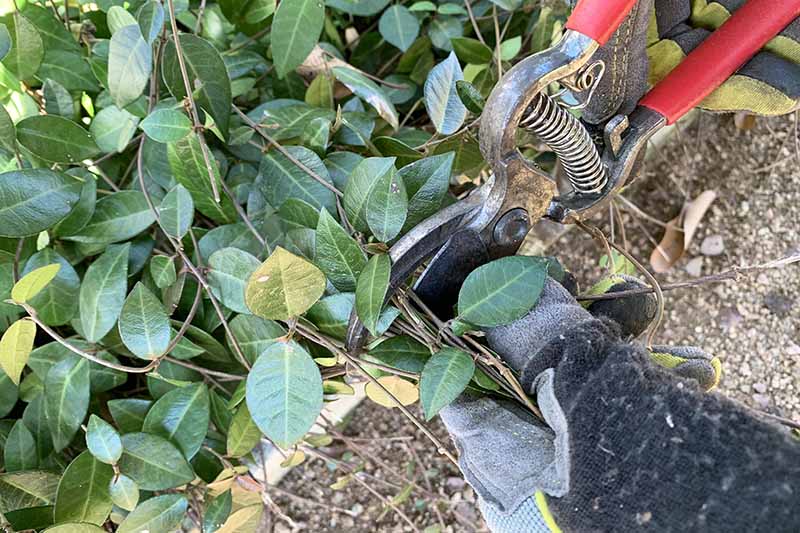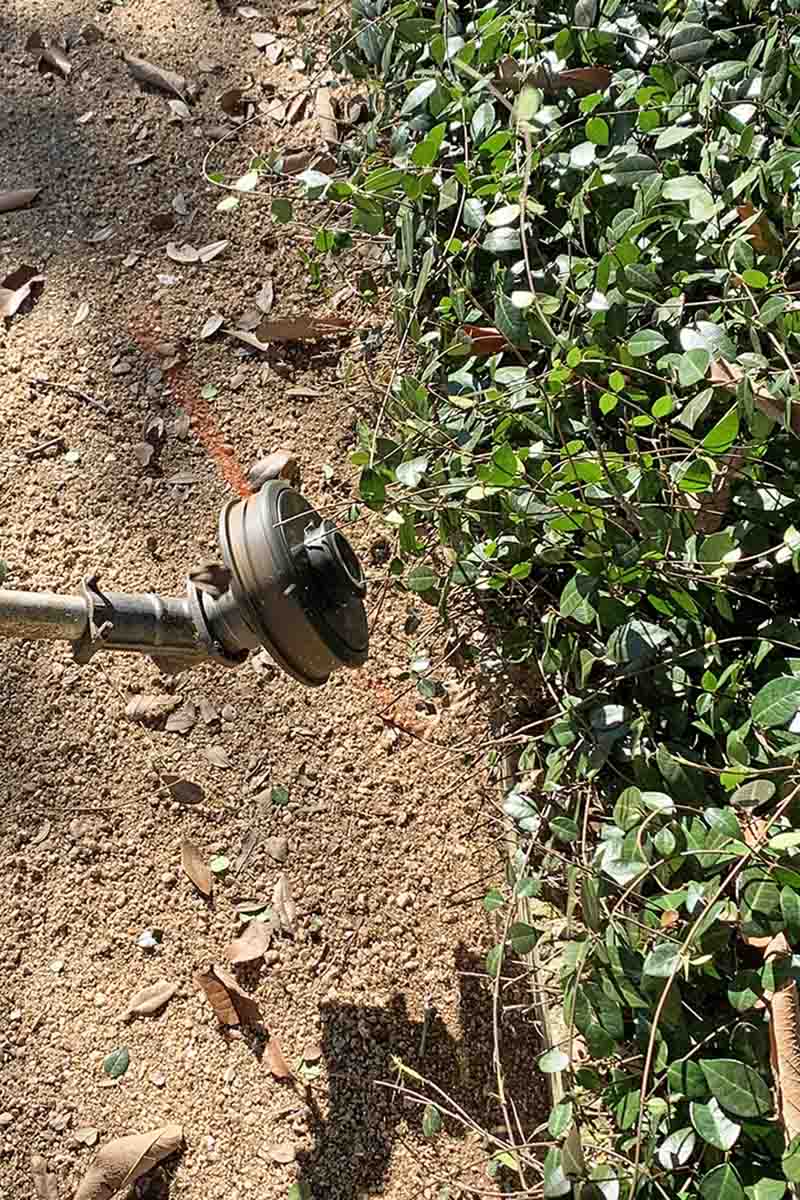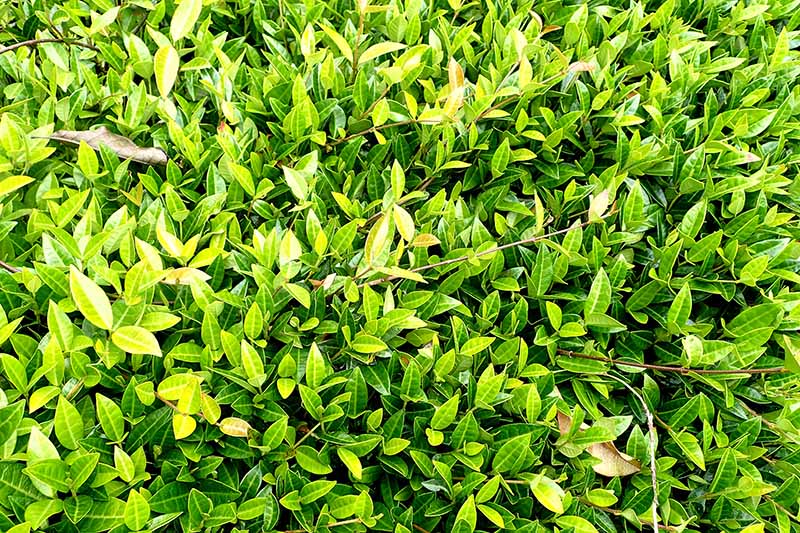Its greatest feature – the ability to quickly cover a patch of bare earth where nothing else will grow – is also its greatest liability, for it grows and grows and grows, and before you know it, it’s taken over half your lawn and is steadily marching toward the neighbor’s. We link to vendors to help you find relevant products. If you buy from one of our links, we may earn a commission.
4 Tips for Keeping Asiatic Jasmine in Check
The best advice we can offer is to keep a close eye on your vines. I know this can get tricky, what with life getting in the way and all.
But try to make a point to get out there, especially during the spring growing season, and monitor the progress of your Asian jasmine as it makes its bold advance across the garden. Stay on top of it, and your job will be easier. Here are our top 4 recommended methods for trimming back the inevitable strays:
1. Hand Trim Stray Vines
One option for keeping Asian jasmine runners in check is to simply cut off undesired lengths with hand pruners. I often grab a handful of the offending vines and trim several at a time. This fine-tuned trimming enables you to make more precise cutting choices. You could also use hedge shears for bigger trimming jobs.
2. Get Out the String Trimmer
If you have a large area that needs work, consider using a string trimmer. You can trim the edge of the “patch” or you can skim the trimmer over the top of the vines. At one house we lived in, we had a huge area of Asian jasmine. My husband would string trim across the top of the whole thing about once a year, to keep the mass from getting too tall, and then a couple of times a year, he’d “edge” the vine to keep it from growing over the driveway. We don’t like the hard, very vertical hedge edge that can sometimes result from this kind of trimming, so he works some kinda magic with the trimmer to allow some bits to spill just a couple inches over the edging material, giving it a softer edge.
3. Use a Mower
Some gardeners periodically – typically every three years or so – mow their patches of Asian jasmine, particularly if it’s gotten extraordinarily thick and there are a lot of leafless woody bits under the top canopy. The best time to do a mow is in late winter, just before the plants begin their spring growth spurt. Set your mower on the highest setting and have at it. The initial results will not be pretty, but the vines will re-leaf in a few short weeks and your patch will look better than ever.
4. Get the Roots Out
If you wish to remove an entire section of Asiatic jasmine, to truly get rid of it, you’ll want to scalp the area with your mower and then carefully and thoroughly dig out all the roots. You can use a rototiller to churn up the soil and make the roots more accessible. It’s essential to collect and discard every bit of plant material, because these plants can root from cuttings. If you don’t get rid of everything, you’ll have new plants popping up.
Post-Pruning Care
After you’ve cut back your Asiatic jasmine, water it well to help it recover from the shock of the trims. Add one inch of water per week for four weeks. If you find it needs a haircut, you have several options to either remove bulk or prevent creepage. Do you have Asiatic jasmine? What are your secrets for keeping it in check? Share in the comments section. If you’re new to Asiatic jasmine and want to learn more, check out our full growing guide. Do you have other pruning chores on the horizon? You’ll need these articles for guidance:
The Basics of Pruning 5 Tips for Pruning Roses Like a Pro Pruning Ornamental Trees and Shrubs
Photos by Gretchen Heber © Ask the Experts, LLC. ALL RIGHTS RESERVED. See our TOS for more details. Originally published on February 7, 2020. [lastupdated]. Uncredited photos: Shutterstock.
